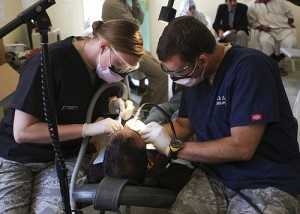
Patients continue to suffer at an alarming rate from surgical equipment left inside their bodies, despite efforts to reduce these mistakes. Retained surgical items can cause great harm and lead to additional surgeries or hospitalizations, and even death. What Gets Left Behind? In the United States, an average of 4,000 surgical errors take place each year. Though larger items have been found inside of patients, the most common tool left behind is a surgical sponge. These sponges are the squares of gauze used to soak up blood during surgery. Because of their consistency and the fact that they are generally covered in blood, sponges can easily become camouflaged in surrounding organs and tissues. A retained surgical sponge is most often left in the abdomen, where it can wreak havoc. Sponges have been known to wrap around and perforate a colon, causing hemorrhages and infections. Surgical sponges can also puncture vital organs or blood vessels, leading to internal bleeding. How Does This Type of Surgical Error Happen? Though strict guidelines are in place for Illinois medical professionals, including the counting of any and all medical equipment used during surgery, various factors can lead to a tool being left behind. Usually, nurses keep track of surgical sponges by counting them both before and after surgery. Fatigue, stress, the rush of an emergency surgery and even shift changes can contribute to distraction. Fortunately, technology is now aiding in the fight against retained surgical tools. Very small chips can now be sewn into each individual piece of gauze, which can be detected by a special mat or wand at the conclusion of the surgery. One study by the University of North Carolina found that this technology helped to find 23 sponges left in approximately 3,000 patients, over a period of 11 months. This technology is relatively inexpensive to implement, but not in use at all hospitals and surgery centers. Especially during complicated or emergency surgeries, leaving tools behind is a consistent problem. When a medical professional causes avoidable harm to a patient, it may be considered medical malpractice. Because the retention of medical instruments can cause extensive medical care and expenses, loss of work and pain and suffering, victims may be able to receive compensation to cover these costs. Chicago malpractice lawyers can provide further information regarding Illinois medical malpractice laws and how they relate to retained surgical tools.

